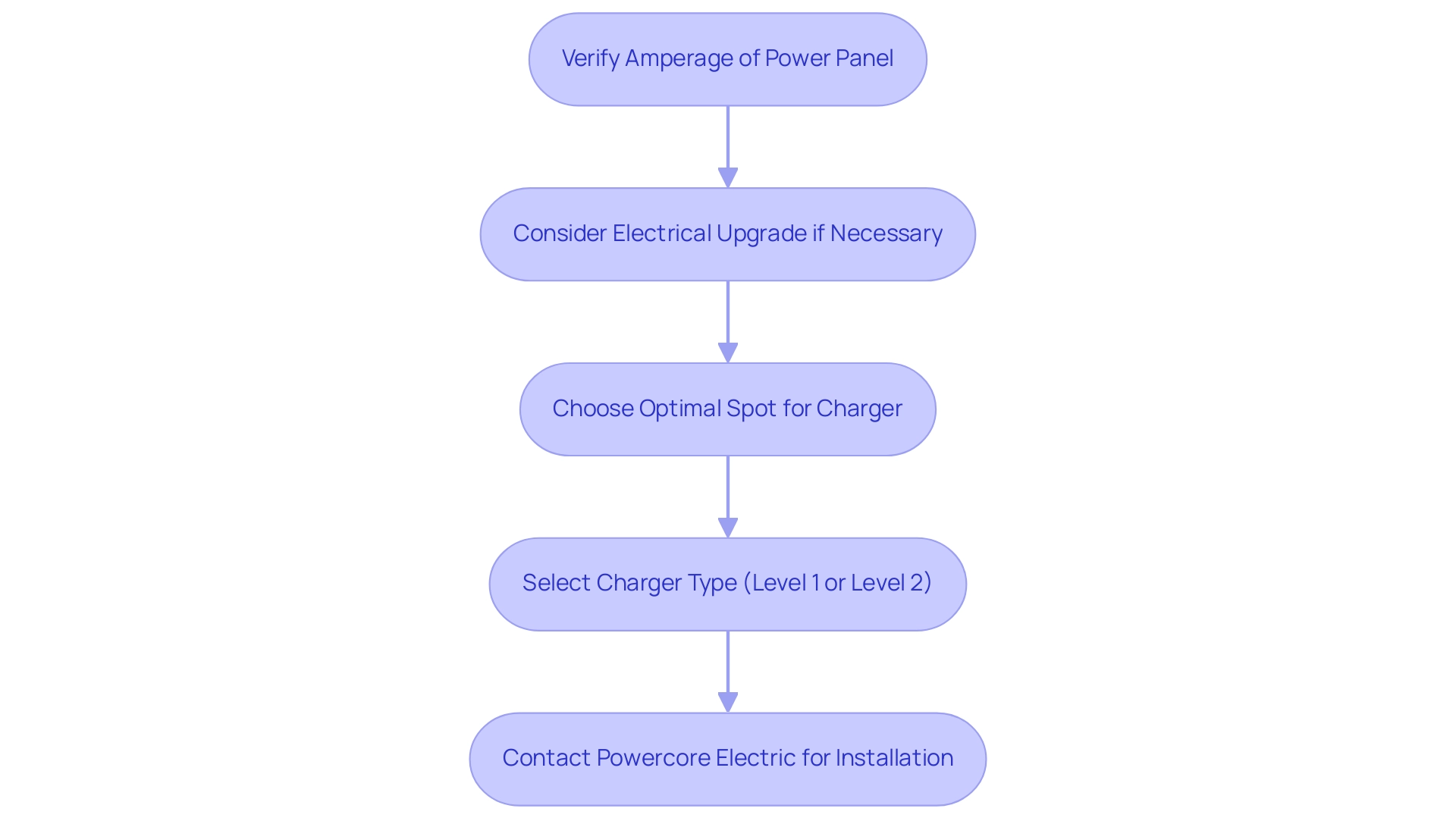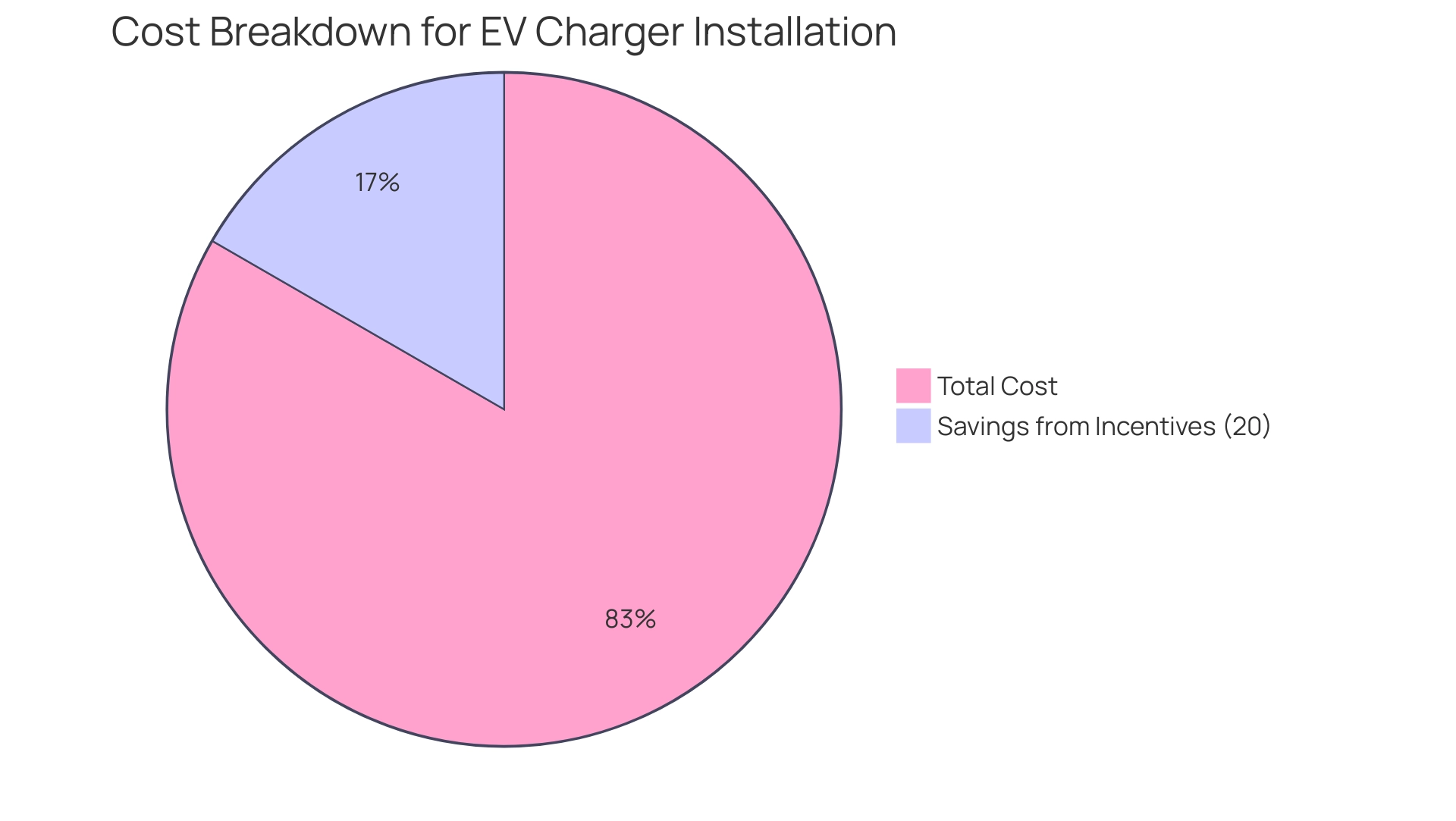Introduction
As electric vehicles (EVs) continue to gain popularity, many homeowners are considering the installation of EV chargers to enhance their driving experience and contribute to a greener future. However, the process can seem daunting, filled with questions about electrical capacity, safety regulations, and installation costs. This guide aims to simplify the journey by providing a comprehensive overview of what it takes to prepare a home for an EV charger, from assessing electrical systems to understanding the costs involved.
With practical tips and expert insights, homeowners can feel empowered to make informed decisions, ensuring a smooth transition to electric vehicle ownership. Whether it’s choosing the right charger or ensuring compliance with safety standards, this article is a valuable resource for anyone looking to embrace the electric revolution.
Preparing Your Home for EV Charger Installation
Before you start setting up your EV station, it’s essential to take a moment to evaluate your home’s power system. Begin by verifying the amperage of your power panel—most Level 2 devices need a 240-volt outlet and at least 30 amps to operate efficiently. If your panel falls short, you might want to consider an upgrade.
With the growing emphasis on robust refueling networks, such as Milence’s plan to build 1,700 public refueling points across Europe by 2027, enhancing your home’s electrical capacity is becoming increasingly relevant. Next, consider the optimal spot for your device; ideally, it should be near where you park your vehicle for convenience. When it comes to selecting the appropriate device, you have alternatives: Level 1 units are slower but easier to set up, while Level 2 units offer quicker power delivery, making them a favored option for many homeowners.
As emphasized in the Milence HDV Charger Initiative, developing robust power supply infrastructure can inspire confidence in potential EV owners. Moreover, as Korea has shown by decreasing its EV subsidy while allocating resources to EVSE, preparing your home’s power system for an EV unit is a proactive measure towards engaging in this changing environment. To guarantee a seamless setup procedure and an effective powering experience, think about contacting Powercore Electric to install a car charger at (916) 699-8778 or ryan.serrano@powercoreinc.net.
They focus on these setups, performing a thorough site evaluation, making any necessary electrical upgrades, and ensuring to properly install the car charger and test it to meet all safety standards. Choosing Powercore Electric means opting for expertise and reliability in the EV charging sector.
Step-by-Step Guide to Installing Your EV Charger
- Gather Your Tools: Start your installation journey by collecting essential tools: a screwdriver, wire strippers, a drill, and don’t forget your safety gear—gloves and goggles are a must!
- Turn Off Power: Safety is key! Before you begin, make sure to turn off the power at the circuit breaker. This vital measure assists you in preventing any power-related dangers while working on your device.
- Install the Mounting Bracket: With your tools ready and power off, it’s time to install the car charger. Use the template that came with your power supply to mark the position on the wall. Drill the necessary holes and secure the bracket firmly in place.
- Connect Wiring: Now for the wiring! Carefully run the appropriate gauge wire from your electrical panel to the charging location where you plan to install the car charger, ensuring you adhere to all local codes. Connect the wires to the power source according to the manufacturer’s instructions—this is crucial for safety and functionality.
- Secure the Device: With the wiring in place, attach the device to the mounted bracket. Double-check that all connections are tight and secure to prevent any issues down the line.
- Testing and Commissioning: Before handing over the device, it’s vital to rigorously test the installation to ensure it’s functioning optimally and meets all safety and regulatory standards. If any issues arise, don’t hesitate to consult the troubleshooting steps provided by the manufacturer.
- Turn On Power and Test: The moment of truth! Restore power at the breaker and test the device to ensure it’s functioning properly. Your new EV charger should now be ready to install car charger, connecting you to a greener future!
In the U.S., the government is investing nearly USD 50 million to subsidize projects that enhance access to convenient stations, aiming to establish a national network of 500,000 public EV port facilities by 2030. This underlines the importance of home installations in the broader infrastructure effort. Furthermore, at the conclusion of 2022, NIO has launched ten battery swap stations throughout Norway, Germany, Sweden, and the Netherlands, highlighting the expanding infrastructure for electric vehicles and the importance of home power solutions. Innovative solutions like battery swapping for electric two-wheelers are also on the rise, highlighted by Gogoro’s partnership with Zypp Electric to deploy battery swapping stations in India, illustrating the potential for efficient energy solutions in the EV space. Ready to make the switch to electric vehicles? Contact Powercore Electric today to learn more about our EV charging solutions and how we can help you embrace a cleaner, more sustainable future!
Ensuring Safety and Compliance in Your Installation
Ensuring safety during your EV charging setup is paramount. Start by equipping yourself with the right protective gear—gloves and goggles are essential for your safety. Familiarizing yourself with local wiring codes is crucial, as each area may have specific regulations on how to install car chargers.
In fact, statistics show that compliance with electrical codes can reduce safety incidents by up to 30%. Don’t forget to obtain any necessary permits before launching into your project; this step helps you stay compliant and avoid future issues. If you find any aspect of the setup process daunting, reaching out to a licensed electrician, such as the experts at Powercore Electric Inc. at (916) 699-8778 or ryan.serrano@powercoreinc.net, can provide peace of mind.
Powercore Electric focuses on solar panels, battery backups, and EV charging stations, positioning them as your reliable ally for secure setups in Northern California. Additionally, make sure your setup meets the National Electrical Code (NEC) standards, which often include critical elements like proper grounding and circuit protection. Following these guidelines not only safeguards you during the setup but also guarantees a compliant and dependable charger, minimizing the risk of safety incidents.
As Argonne National Laboratory observes, ‘EV sales continue to rise,’ emphasizing the increasing importance of safe and compliant setups. Additionally, contractors encounter difficulties in ensuring adherence to service requirements while trying to install car chargers, as demonstrated in the case study titled ‘Challenges in Installing EV Charging Stations.’ Remember, compliance is not just about following the rules—it’s about creating a safe and efficient environment for your new electric vehicle.
For additional details about Powercore Electric’s services, including solar panel setups and battery backup solutions, visit their website or reach out to them directly.
Understanding the Costs and Financial Incentives for EV Charger Installation
When establishing an EV power source at home, expenses can differ greatly depending on the kind of device, the intricacy of setup, and whether you need to install a car charger or make any electrical enhancements. On average, homeowners can expect to invest between $800 to $2,000 to install a car charger for a Level 2 setup. However, there’s no need to feel overwhelmed by this figure!
Numerous financial incentives are available to help ease the burden on your wallet. Federal tax credits, state rebates, and even local utility incentives can significantly lower your costs to install a car charger, often saving homeowners anywhere from 10% to 30%. Plus, to boost your property value and provide a competitive edge for future tenants, you can install a car charger, making it a smart investment.
If you’re looking for expert assistance, consider reaching out to Powercore Electric Inc. at ryan.serrano@powercoreinc.net or call us at (916) 699-8778. Our locally-owned company brings deep knowledge of California’s unique electrical needs and is committed to delivering unmatched quality craftsmanship and customer-first service. We offer a range of services, including solar panel installations and battery backups, ensuring that your eco-friendly investment is in capable hands.
Our satisfied customers can attest to our dedication and expertise. As you investigate your choices, remember to look at the newest EV models, such as the 2024 Buick Envista and the 2024 BMW X5 Plug-in Hybrid, which can perfectly enhance your new power station. For a personalized estimate and to learn more about our services, contact us today!
Maintaining Your EV Charger: Tips and Troubleshooting
To keep your EV charging station in top shape, start by routinely inspecting it for any signs of wear and tear. Look out for frayed cables or loose connections that might signal it’s time for a repair. Maintaining the power area tidy and free of debris is also essential, as a clean space can help prevent overheating.
Don’t forget to check for software updates from the manufacturer—these updates can significantly enhance both performance and security. With the total number of publicly available fast charging stations in Europe reaching 50,000 units at the start of 2022, the growing infrastructure underscores the importance of maintaining your device. If you encounter problems, such as the device not connecting or charging slowly, your user manual is an excellent first resource for troubleshooting.
Often, simply resetting the device or ensuring your electrical supply is functioning can solve the problem swiftly. Tom Moloughney observed that removing the cost of a leased EV will ease both issues for EV owners, emphasizing the importance of keeping your charging station to prevent unforeseen costs. Remember, regular maintenance not only extends the life of your device but can also save you from potential headaches down the road.
Additionally, initiatives like the ChargeX Consortium are working towards improving public power supply reliability and usability, emphasizing the collaborative efforts needed to enhance the overall experience. For professional assistance to install car charger and handle maintenance, consider reaching out to Powercore Electric Inc. Their expertise in solar panels, battery backups, and EV charging stations ensures that you receive the best support for your home charging needs. Contact Powercore Electric at ryan.serrano@powercoreinc.net or call (916) 699-8778 for more information.
Conclusion
Preparing a home for an EV charger is an exciting step towards embracing electric vehicle ownership and contributing to a sustainable future. By assessing the electrical system, homeowners can ensure they have the necessary capacity to support a Level 2 charger, which is often the preferred option for its efficiency. Choosing the right location and charger type, along with understanding safety regulations and compliance, are crucial components of a successful installation.
The installation process itself can be straightforward when following a step-by-step guide, but it’s essential to prioritize safety and seek professional help if needed. Financial considerations also play a significant role; with various incentives available, the initial investment can be offset, making it a financially sound decision. Regular maintenance of the charger will keep it functioning optimally, further enhancing the overall EV experience.
In summary, transitioning to electric vehicle ownership is not just about acquiring a new car; it’s about making informed decisions that benefit both the environment and personal finances. With the right preparation and support, homeowners can confidently install and maintain their EV chargers, paving the way for a greener, more sustainable future.





